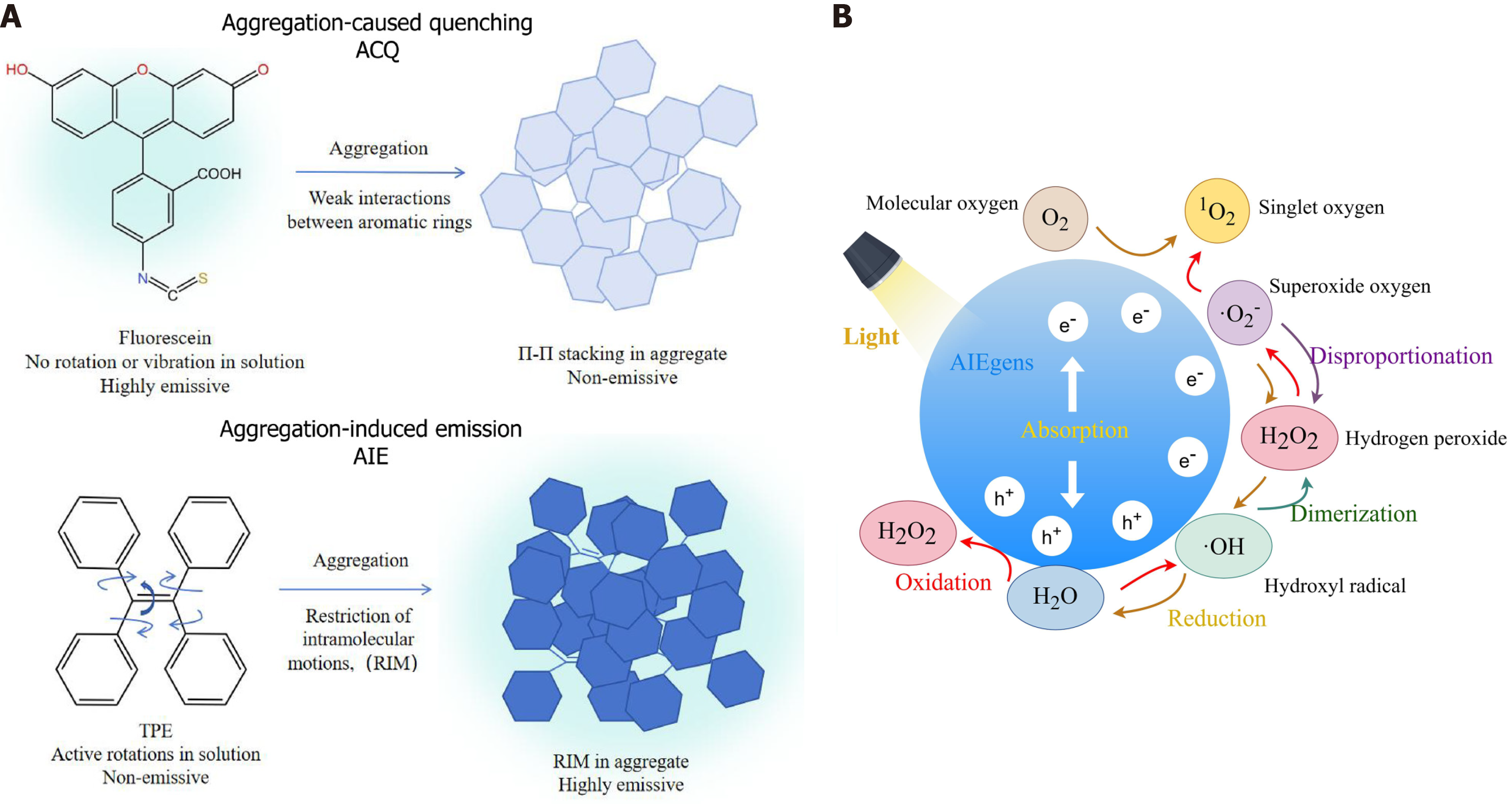Copyright
©The Author(s) 2025.
World J Gastroenterol. Apr 28, 2025; 31(16): 105378
Published online Apr 28, 2025. doi: 10.3748/wjg.v31.i16.105378
Published online Apr 28, 2025. doi: 10.3748/wjg.v31.i16.105378
Figure 1 Aggregation-induced emission luminogens (AIEgens) overcomes the aggregation-caused fluorescence quenching effect, enhancing luminescence efficiency at high concentrations.
Upon light exposure, they generate reactive oxygen species through a series of reaction processes. A: The common fluorescent dye fluorescein exhibits fluorescence quenching in the aggregated state, while the classic aggregation-induced emission (AIE) molecule tetraphenylethylene overcomes the aggregation-caused fluorescence quenching effect and shows enhanced fluorescence at high concentrations; B: AIEgens generate various reactive oxygen species upon light irradiation. AIEgens: Aggregation-induced emission luminogens; AuNPs: Gold nanoparticles; TPE: Tetraphenylethylene; ACQ: Aggregation-induced fluorescence quenching. Created in Figdraw, and the compound structures were drawn using KingDraw.
- Citation: Li YR, Wang G, He WT, Liu T. Application of aggregation-induced emission materials in gastrointestinal diseases. World J Gastroenterol 2025; 31(16): 105378
- URL: https://www.wjgnet.com/1007-9327/full/v31/i16/105378.htm
- DOI: https://dx.doi.org/10.3748/wjg.v31.i16.105378









